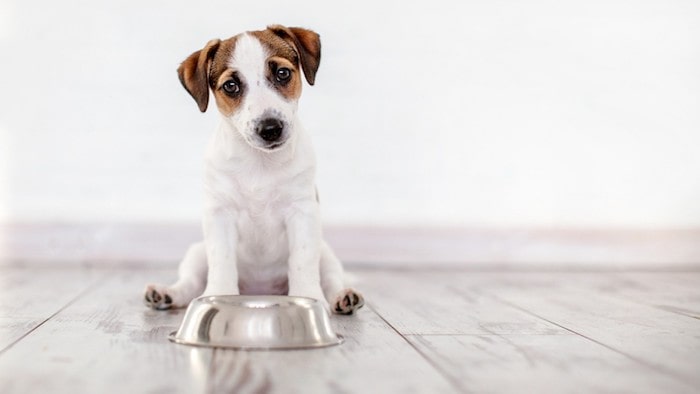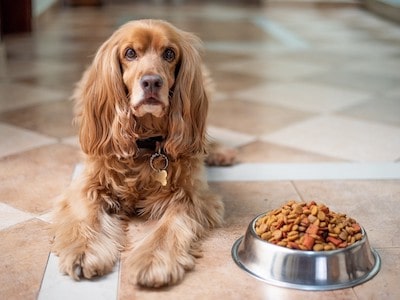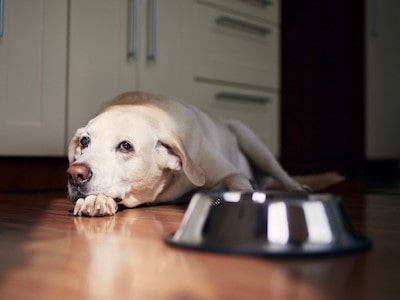Mealtime is an important part of a dog’s day, but what if your furry friend seems afraid of their food bowl? This can be a worrying and perplexing problem for pet owners. Don’t ignore it! There could be an underlying issue causing this fear or anxiety when eating.

In this article, we will look at some common reasons why dogs may fear their food bowls and offer useful advice to help pet owners manage the situation. With knowledge about the causes behind this behavior, as well as strategies which make mealtimes more comfortable for them, you can ensure that your pup gets the nutrition they need to stay healthy and happy.
Reasons Why Your Dogs Might Be Afraid of Their Food Bowls
Here are potential reasons why a dog may be afraid of their food bowl:

- Negative associations: If your dog has had a negative experience associated with their food bowl, such as a loud noise or someone taking their food away, they may develop a fear or anxiety related to the bowl.
- Medical issues: Sometimes, dogs may associate their food bowl with pain or discomfort if they are experiencing a medical issue, such as dental problems or digestive issues.
- Noise aversion: Some dogs may be afraid of their food bowl due to a noise aversion. If the sound of the bowl clanging on the floor or against other objects startles or scares your dog, they may become anxious or fearful during mealtime.
- Previous trauma or abuse: Dogs who have experienced past trauma or abuse may associate their food bowl with negative experiences, which can lead to fear and anxiety.
- Size or shape of the bowl: The size, shape, or even color of the bowl may also contribute to a dog’s fear or anxiety. Some dogs may be more comfortable with shallow, wide bowls, while others may prefer deeper, narrower ones.
- Feeding location: Some dogs may be afraid of their food bowl if it is placed in a location where they feel vulnerable or uncomfortable. For example, if the bowl is placed in a noisy, high-traffic area of the house, or near a perceived “threat” such as a loud appliance or another animal.
- Change in routine: Sometimes, dogs may develop fear or anxiety related to their food bowl if there has been a change in their feeding routine or environment. This could include moving to a new home, changing the type or brand of food, or adjusting the feeding schedule.
Identifying the Cause of the Fear
Identifying the cause of your dog’s fear of their food bowl is the first step in helping them overcome it. Here are some things you can do to determine what might be causing their anxiety:

- Observe their behavior: Watch your dog during mealtime and take note of any behaviors or signs of anxiety, such as shaking, pacing, or avoiding the bowl.
- Consider recent changes: Think about any recent changes in your dog’s environment or routine that could be contributing to their fear. Have you recently moved, changed their food, or adjusted their feeding schedule?
- Check for medical issues: If your dog is displaying unusual behavior, it’s always a good idea to rule out any underlying medical issues. Schedule a checkup with your vet to ensure your dog is healthy.
- Try different types of bowls: Experiment with different types of bowls to see if your dog reacts differently to different materials, shapes, or sizes.
- Test different locations: Try moving the bowl to different locations in your home to see if your dog is more comfortable eating in a quieter, less busy area.
- Assess feeding routine: Evaluate your feeding routine and make adjustments if necessary. For example, try breaking up meals into smaller, more frequent feedings to see if that helps.
How to Help Your Dog Overcome Their Fear of Food Bowls
Once you have identified the cause of your dog’s fear of their food bowl and implemented strategies to help them overcome it, it’s important to take steps to prevent future fear from developing. Here are some tips to help prevent future fear of the food bowl:

- Positive reinforcement: Use positive reinforcement techniques such as treats or praise to create a positive association with the food bowl. Reward your dog for approaching the bowl and eating from it.
- Consistency: Stick to a consistent feeding routine and location to help your dog feel more comfortable and secure during mealtime.
- Gradual changes: When making changes to your dog’s feeding routine, do so gradually to help them adjust without becoming fearful.
- Regular checkups: Schedule regular checkups with your vet to ensure your dog is healthy and free from any medical issues that could contribute to fear or anxiety.
- Make mealtime enjoyable: Try adding some fun and excitement to mealtime by using interactive feeding toys or puzzles. This can help make mealtime more enjoyable and less stressful for your pup.
- Use a calming aid: Consider using a calming aid such as pheromone sprays or supplements to help reduce anxiety during mealtime.
FAQs
It’s always a good idea to investigate any unusual behavior from your dog. While fear of the food bowl may not necessarily be a serious issue, it could be a sign of an underlying medical or behavioral problem.
Not necessarily. Fear and aggression are two different things. While a fearful dog may show signs of aggression if they feel threatened, a fear of the food bowl does not necessarily indicate aggression.
This could be a sign of separation anxiety or a negative association with you being present during mealtime. Try leaving the room while your dog eats to see if that helps. If the issue persists, consult with your veterinarian for further guidance.
Yes, with patience, understanding, and proper training, a dog’s fear of their food bowl can be overcome. It may take time and effort, but it’s important to work with your dog to help them feel comfortable and confident during mealtime.
Whether you’re a new dog owner or an experienced one, go check out DogLikesBest for their expert advice on dog care and behavior.
Conclusion
In conclusion, a fear of the food bowl can be a distressing experience for both dogs and their owners. However, with patience, understanding, and proper training, it’s possible to help your dog overcome this fear and create a positive association with mealtime.
Identifying the cause of the fear is the first step, and working with a veterinarian or animal behaviorist can provide additional guidance and support. Remember to always be patient with your furry friend and celebrate their progress, no matter how small. With time and effort, your dog can learn to love their food bowl and mealtime once again.

Ellis is a retired veterinary technician and full-time contributor at DogLovesBest. He likes writing about pet health care tips and reviews the products that are useful for fidos on a daily basis.
Ellis also guardians a Siberian husky, Nova, and a cat named Shilly. They all live happily with his wife Ammy, and both the dogs on a seaside apartment in Queens, NY.
